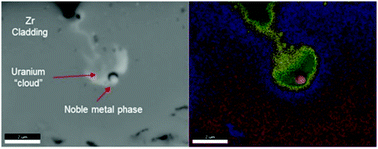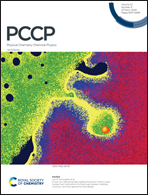A new non-diffusional gas bubble production route in used nuclear fuel: implications for fission gas release, cladding corrosion, and next generation fuel design
Abstract
A novel relationship between noble metal phase particles and fission gas bubble production in used nuclear fuel is described. The majority of Te atoms within noble metal phase undergo radioactive decay to form stable Xe within a few hours after particle formation. This results in the production of clusters of Xe atoms contained within the solid metal matrix exhibiting an equivalent gas bubble pressure approaching 1 GPa. These high pressure bubbles are stabilized by the UO2 within the bulk of the fuel. However, when these bubbles form near the fuel/cladding interface, in combination with local and temporal damage caused by fission recoil, they are capable of overcoming the fracture strength of the UO2 and rupturing catastrophically. The force of the resulting bubble rupture is sufficient to eject noble metal phase particles several microns into the cladding. This proposed mechanism explains the observance of noble metal phase in cladding and is consistent with a host of morphological features found near the fuel/cladding interface.

- This article is part of the themed collection: 2020 PCCP HOT Articles


 Please wait while we load your content...
Please wait while we load your content...